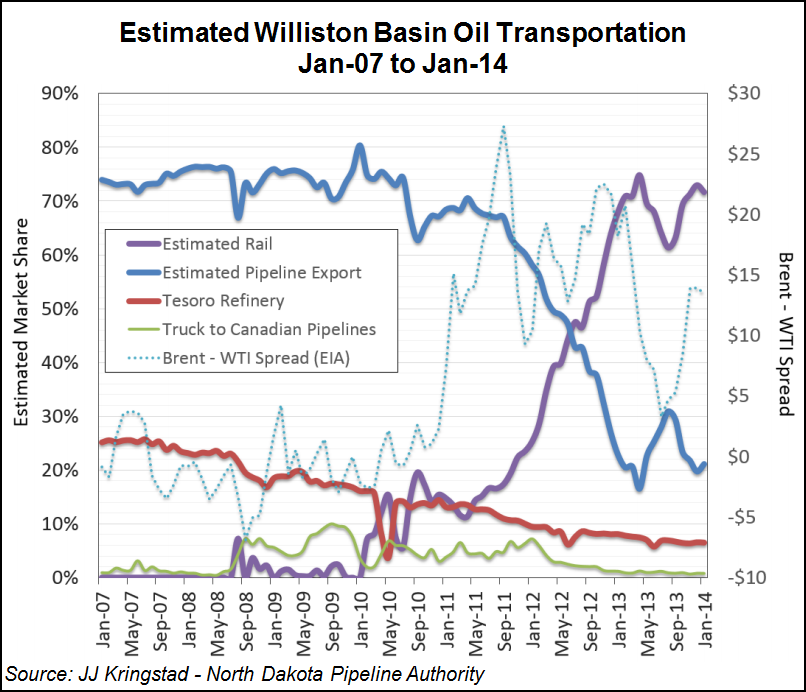Bakken Shale | E&P | NGI All News Access
Long Winter Leads to Low North Dakota Oil/Gas Production
Mostly harsh winter weather was attributed to North Dakota’s oil and natural gas production remaining depressed in February, the most recent month for which the state has complete statistics, the Department of Mineral Resources (DMR) Oil/Gas Division reported Friday. Final data from March and April likely will show a turnaround, DMR Director Lynn Helms said.

While daily production picked up compared with January statistics, February totals overall showed oil production down at 26.6 million bbl (951,340 b/d) compared to January’s 28.9 million bbl (935,126 b/d); and natural gas at 29.7 Bcf (1.06 Bcf/d), compared with January totals of 31.4 Bcf (1.01 Bcf/d).
Other indicators such as rig counts, well completions and prices were relatively favorable, Helms said, although he reported flaring staying high at 36%, and he reiterated DMR’s plan to hold a public hearing April 22 on new stepped up anti-flaring rules that he hopes to have effective around June 1 when other oil/gas regulatory changes are slated to be effective (see Shale Daily, March 5).
Producing wells reached a new all-time high in February at 10,186 with 69% (7,065 wells) of the wells now being unconventional, Helms said. After dropping considerably in February, drilling permits issues increased to 250 in March, nearly as many as were issued in January. The rig count rose to 193 in March, and it was reported to be at 191 on Friday, according to Helms.
“I’m pretty confident we will be hitting the million barrels-a-day mark in March and/or April,” Helms said. As the weather warms, there should be a number of back-to-back months where oil production increases by 50,000 to 70,000 b/d each month, he said.
Natural gas prices delivered to Northern Border Pipeline at Watford City, ND, dropped by $2.51 to $4.14/Mcf, according to Helms, resulting in a current oil-to-gas price ratio of 21-1.
Infrastructure continues to be an issue impacting oil shipments and the levels of flared gas, but both Helms and Justin Kringstad, director of the North Dakota Pipeline Authority, offered some hope for progress later this year. Kringstad said that amounts of oil shipped by rail continued to decline somewhat in February as 67% of oil shipped went by rail, compared to more than 70% in previous months.
Three new oil pipeline projects are expected to come online later in the year, and the Tioga natural gas processing plant is coming online this month on a phased basis, the two state officials said.
© 2024 Natural Gas Intelligence. All rights reserved.
ISSN © 2577-9877 | ISSN © 2158-8023 |
